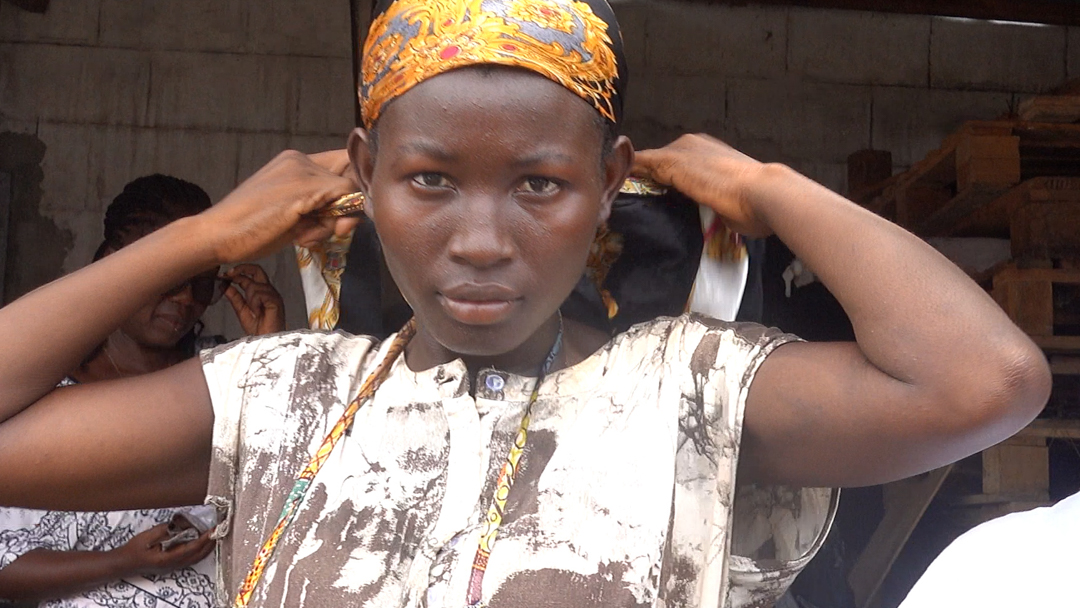
We witness Takoradi in full swing, from the fishing harbor to the market circle
The Zuiderdam moored in Takoradi toward the end of a long jetty, about 50-100 yards across stretching a mile from the mainland, around 7 am. It would take another 90 minutes to get cleared before we could go ashore. Meanwhile, vendors were busy erecting a couple dozen tents for the pop-up craft market that would open soon.

This map shows where we moored relative to the shuttle stop near the Market Circle. The street highlighted in yellow is where we walked.
We booked a city tour with Across Africa and the eight of us met our driver and guide around 9 am. There were four Across Africa tour vans/buses today and we would caravan to each of the stops where we would meet for a shared larger group tour. Each of the other groups had about twenty people.

This map shows all the stops on our tour today
Our first stop was the Bisa Aberwa Museum which holds over 2000 artifacts and sculptures of heroes of civil rights movements from Africa and around the world. The museum covers three floors and we spent about 30 minutes exploring.
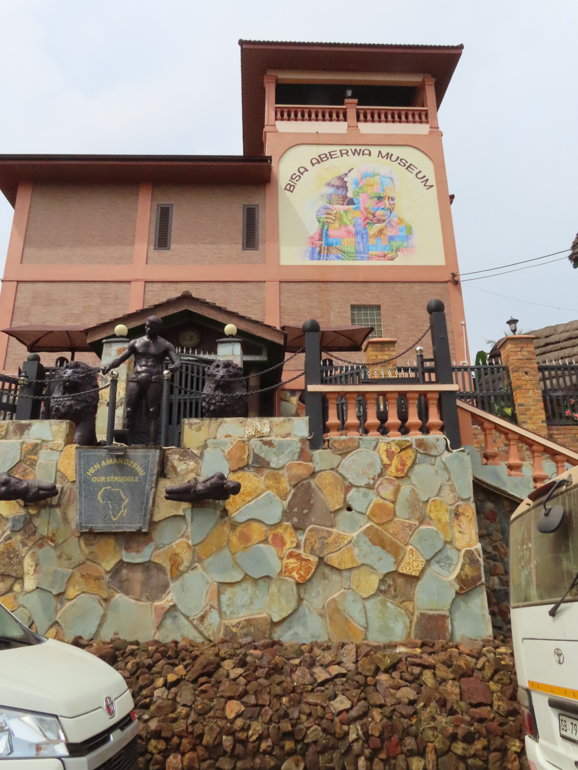
Entrance to Bisa Aberwa Museum
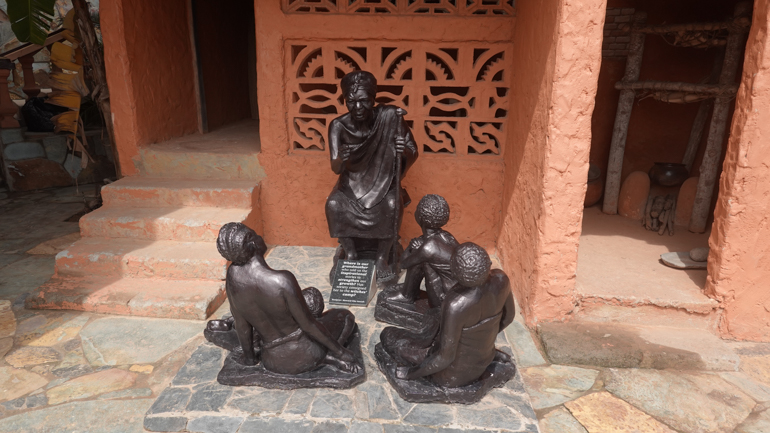
This sculpture is about grandmothers
The Albert Bosomtwi-Sam Fishing Harbour was our next stop. To reduce congestion and minimize disruption of this very busy fish harbor and market, the tour bus arrivals from our groups as well as HAL were staggered. While we were waiting we had a tour of a fish sorting and examination room. The room had a removable floor with large removable metal ice containers. The ice kept the floor cold to help keep the fish fresh when they were being examined and sorted.
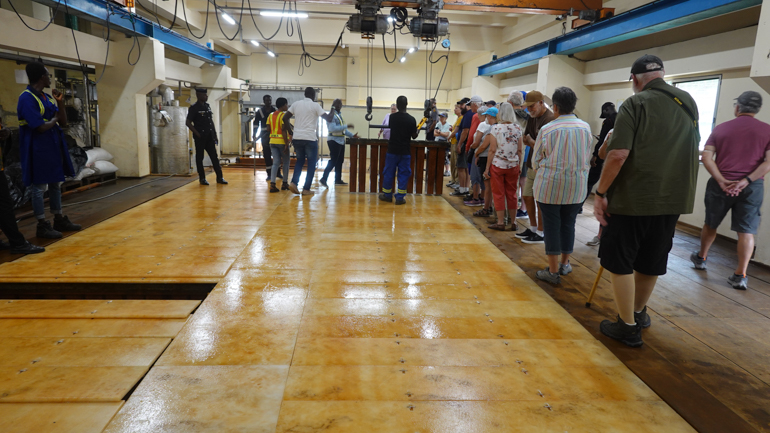
Underneath this floor were large metal rectangular containers holding ice
Afterward, we walked over to the wharf and a large fish-handling shed, with a 20-foot roof.
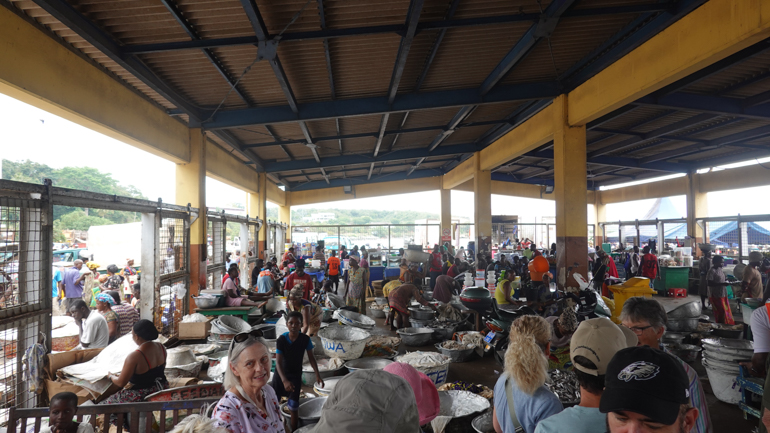
Under this cover were hundreds of people quickly moving to and fro with large containers of Herring fish.
Along the wharf, dozens of fishing boats moored and men offloaded their fish, mainly herring, into metal tubs. Other very strong men quickly carried these tubs, balanced on their heads, to an open area in the fish handling shed where waiting women would cover the fish before they were moved out to the street where they awaited transfer to other locations.
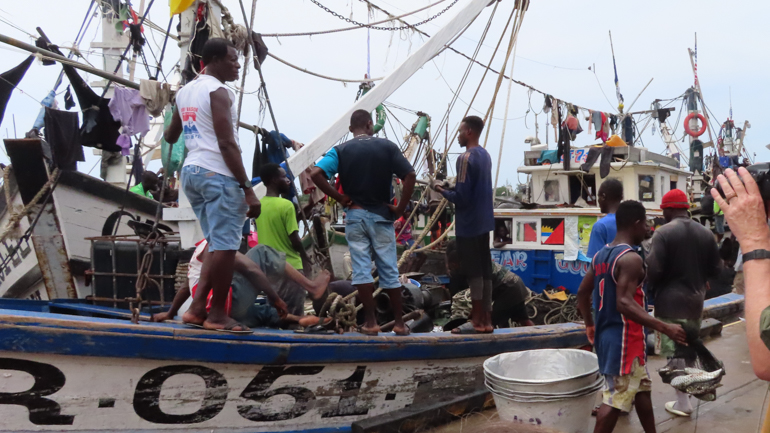
Unloading fish from the boats into the metal tubs
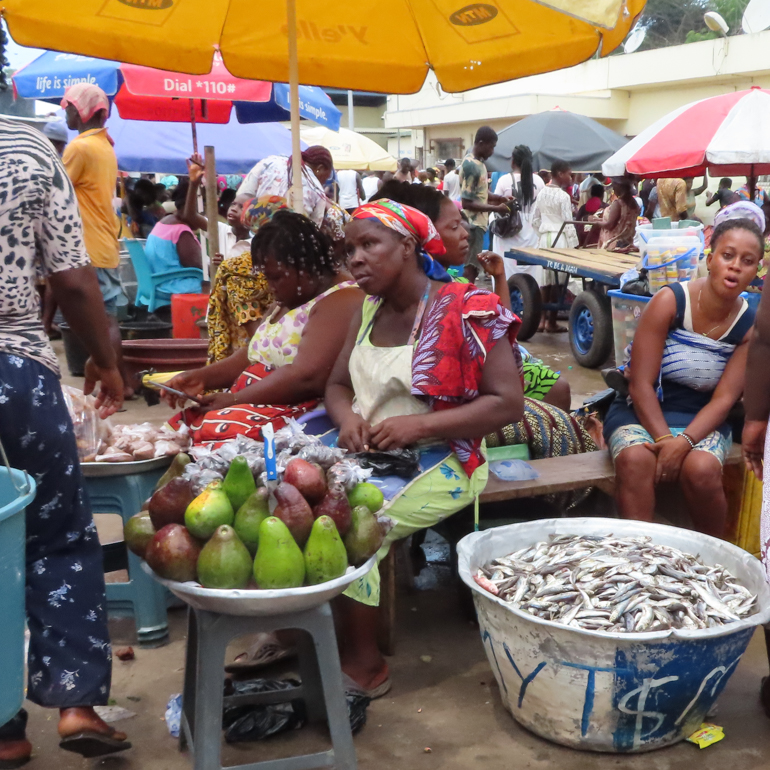
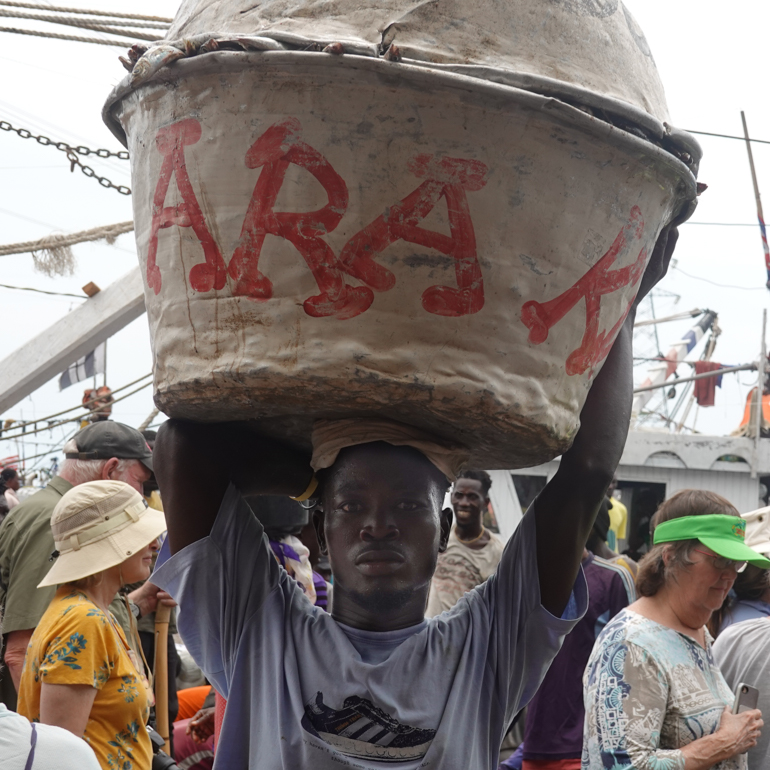
When full these tubs can weigh over 200 lbs
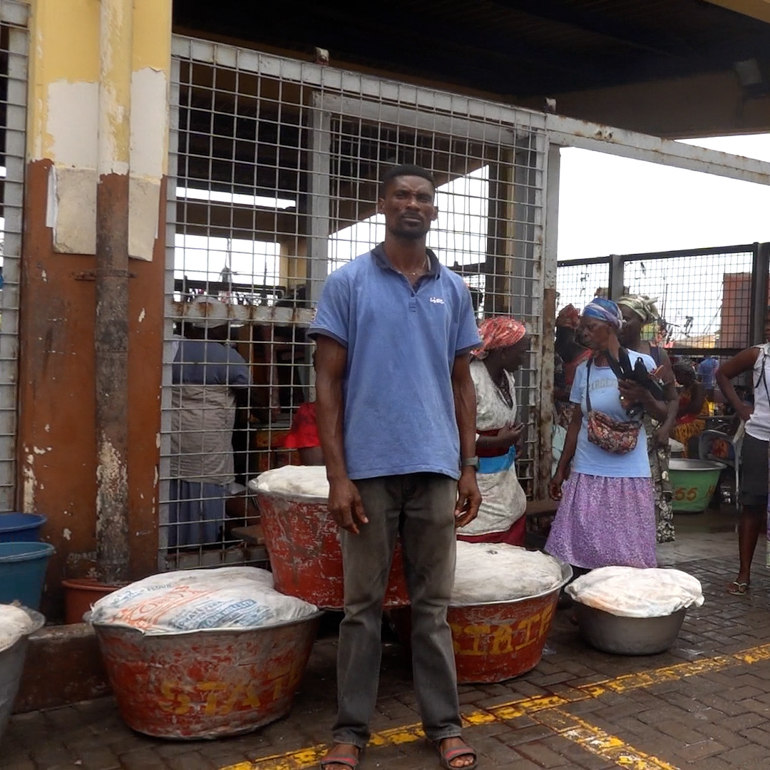
Tubs of fish are now covered and ready to move from the harbor.
The activity and energy level in this area was very high. No one was sitting around and everyone was in constant motion.
Nearby Fort Orange was our next stop. The Dutch built the fort as a fortification in the 17th century. It was transformed into a lighthouse after being seized by the British in 1873. The fort was also used to hold slaves prior to their being loaded onto ships. There were some nice views of Takoradi and the Fishing Harbor from the walkway at the top of the fort.
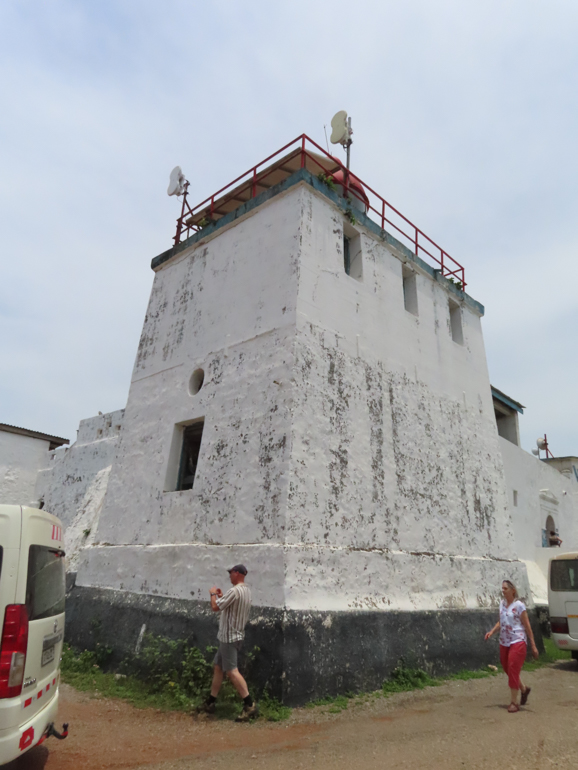
Fort Orange
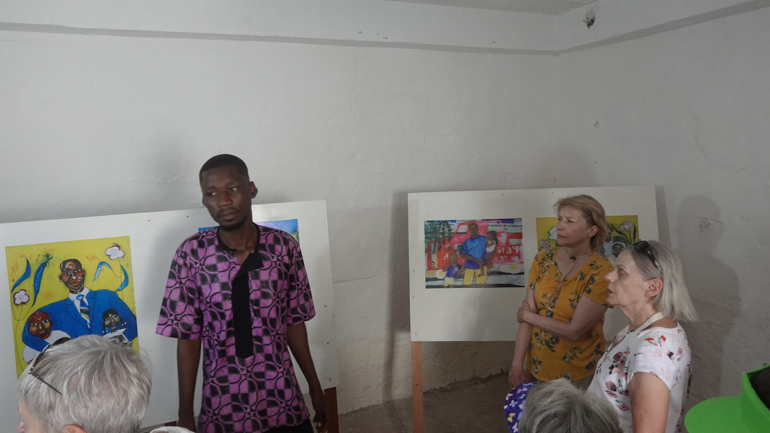
The rooms inside Fort Orange also display artwork. Here the guide explains more about how these rooms were used back when the fort was active
One of the main markets in the area is Takoradi Market Circle, commonly known as Market Circle. The HAL shuttle bus stop dropped off people near the circle. We stopped a few streets back and walked a couple blocks down a different street to get a feel for the area and observe the activity.
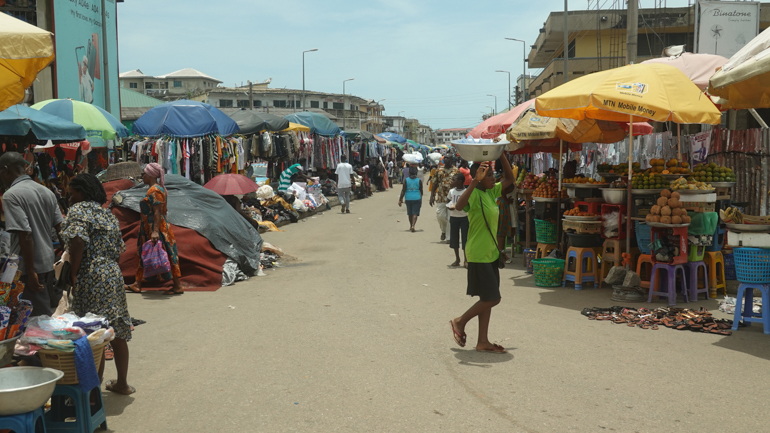
Market Circle
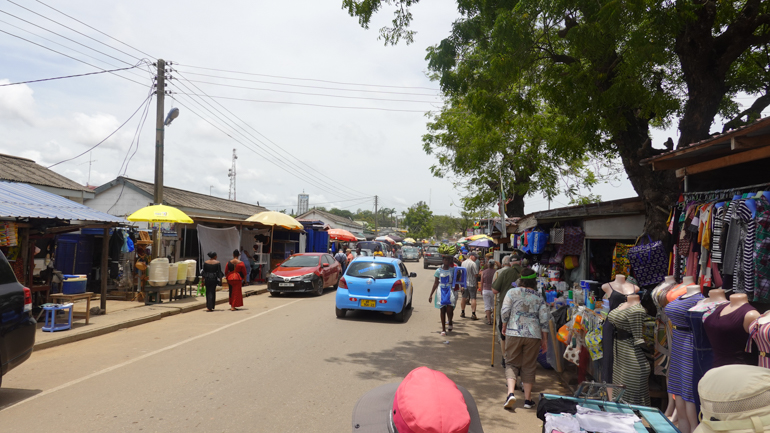
Typical shopping street in Takoradi near Market Circle
Everything was for sale here from fresh meats, fruits and vegetables to housewares and clothing. A few shops sold appliances. It was like a WalMart was emptied along the street with each type of product being sold in small, separate shops.
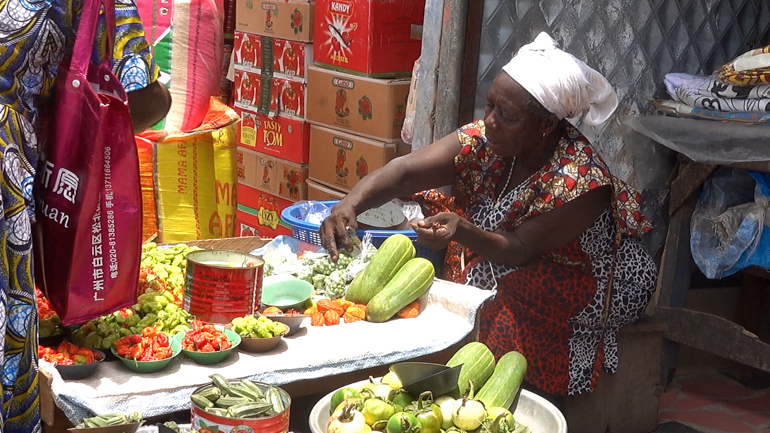
Selling vegetables in Market Circle
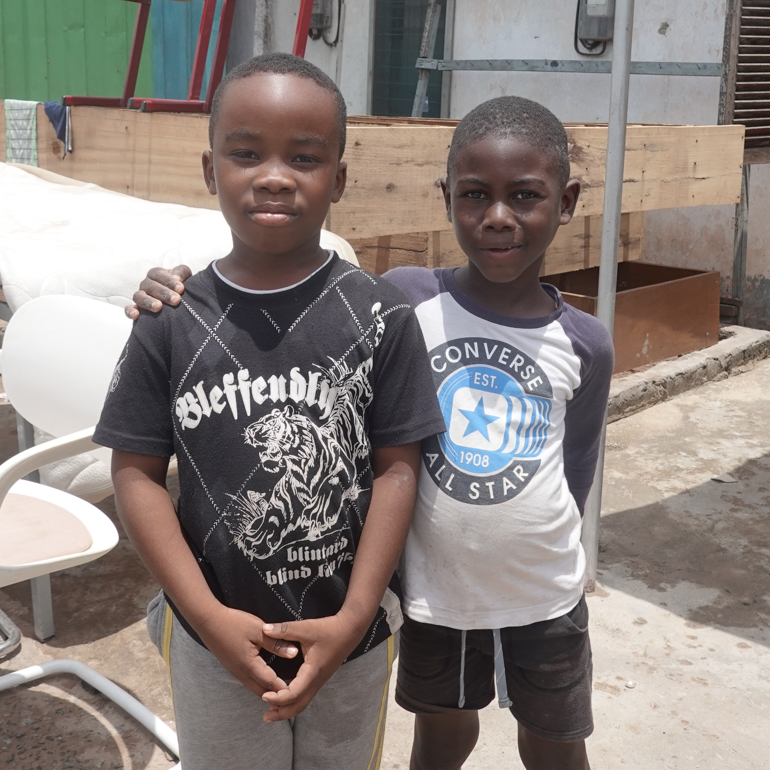
Friendly children were eager to pose
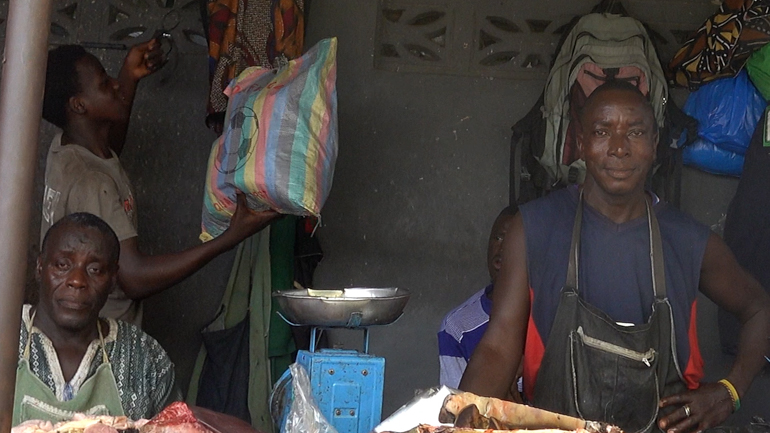
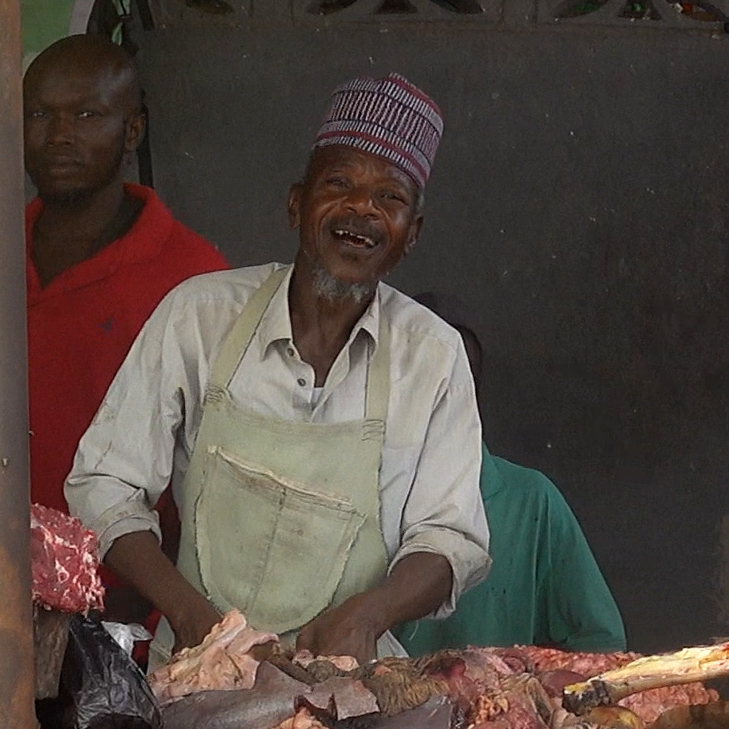
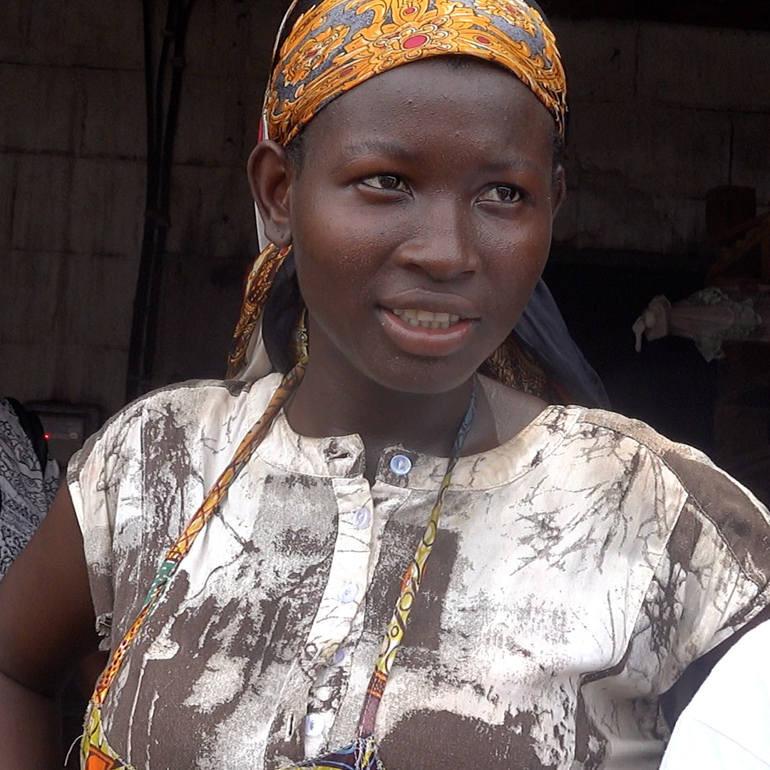
There is a structure in the center of Market Circle that is under construction with an unknown completion date. When complete this will provide more covered space for additional vendors.
Earlier in the day, Judy had seen a few women wearing dresses made of white fabric with a black geometric pattern. She went into a small fabric store along the street and found a white fabric with a black geometric print that she liked. She bought 4 yards for $15.00 USD. One of the other guides in our caravan told us that this kind of fabric has a phrase stamped along the selvage of the fabric. Google Translate translated the phrase on this fabric to “I leave my children and my loved ones in the Lord’s hands”.
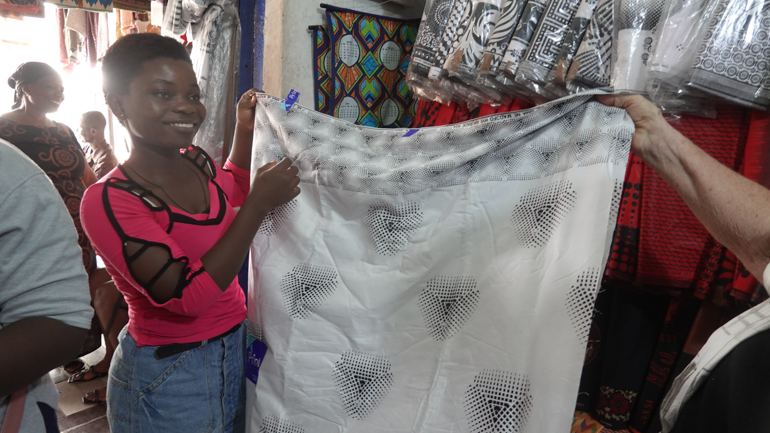
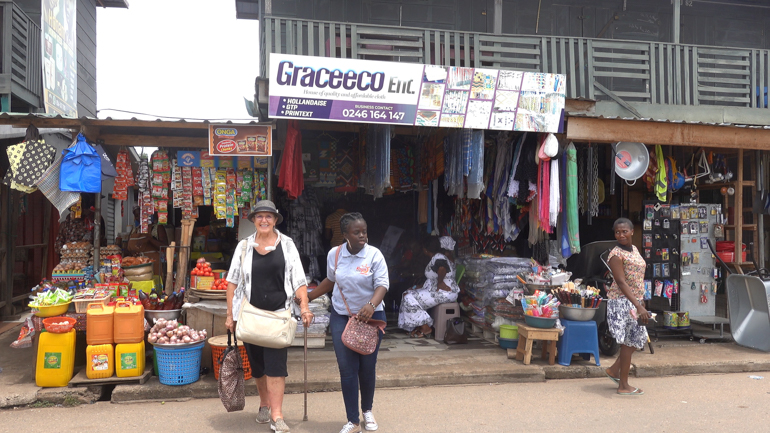
Our final stop was the Vienna City Beach Resort. We could have stayed longer at the ressort and had lunch at our own expense, but we decided to spend about twenty minutes exploring and taking some pictures before heading back to the ship.
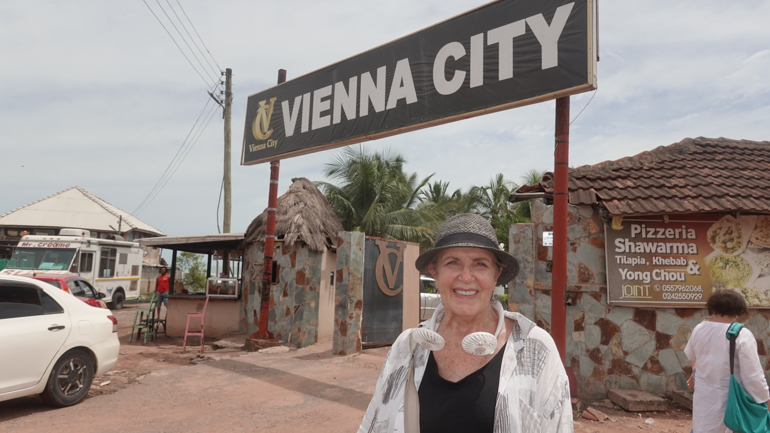
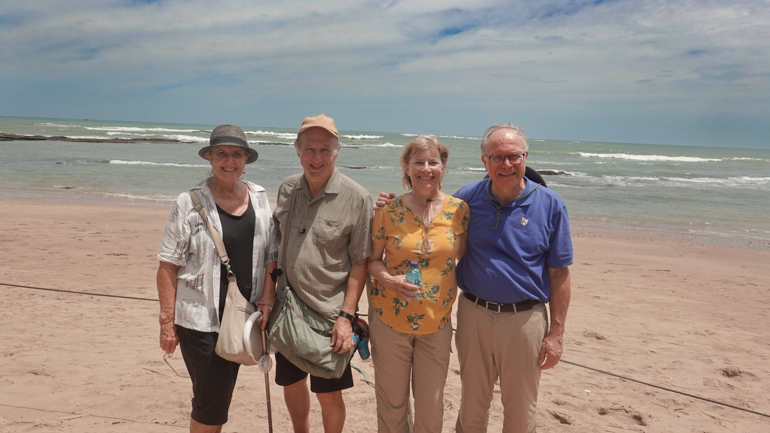
Once back at the ship, we spent a few minutes wandering up and down the pop-up market. We noticed a few well-dressed local officials heading aboard for a visit and saw a dozen or more uniformed Customs and Immigration officials leaving the ship.
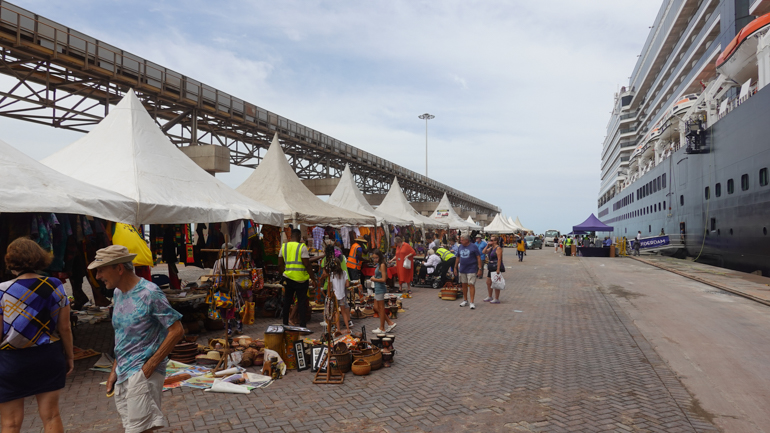
Pop-up market next to ship
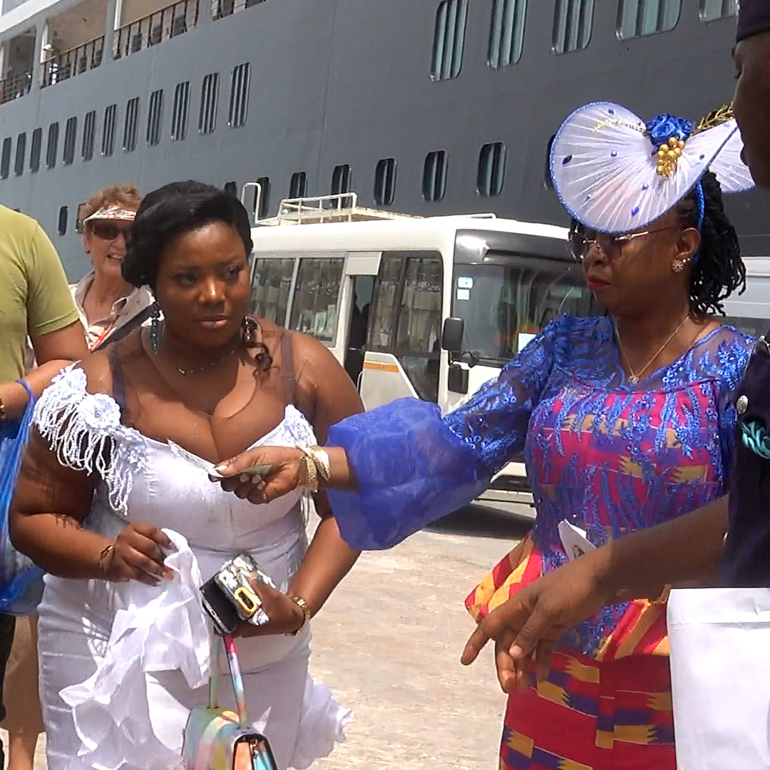
Local VIPs waiting to board the ship
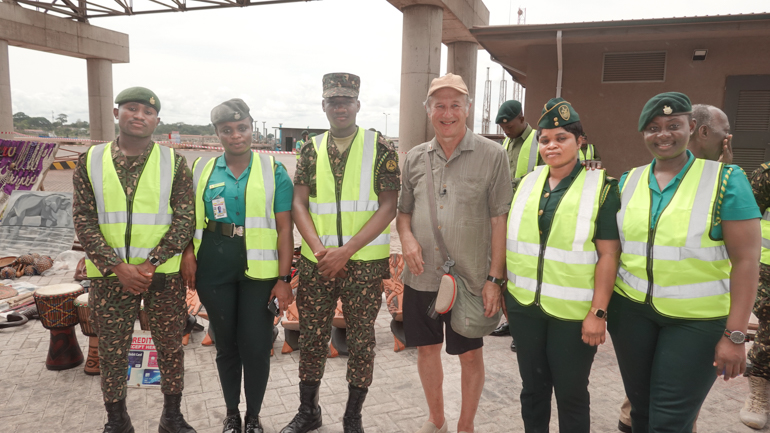
Pete with uniformed Customs Officials
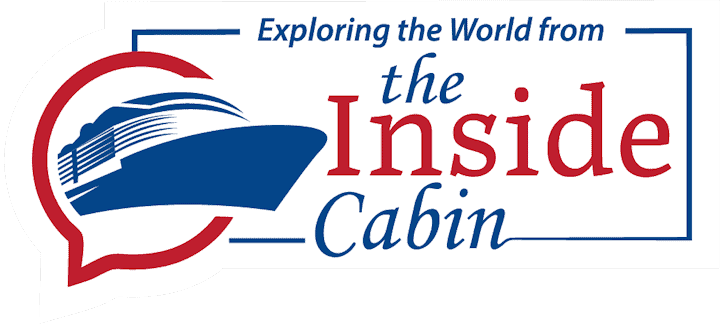
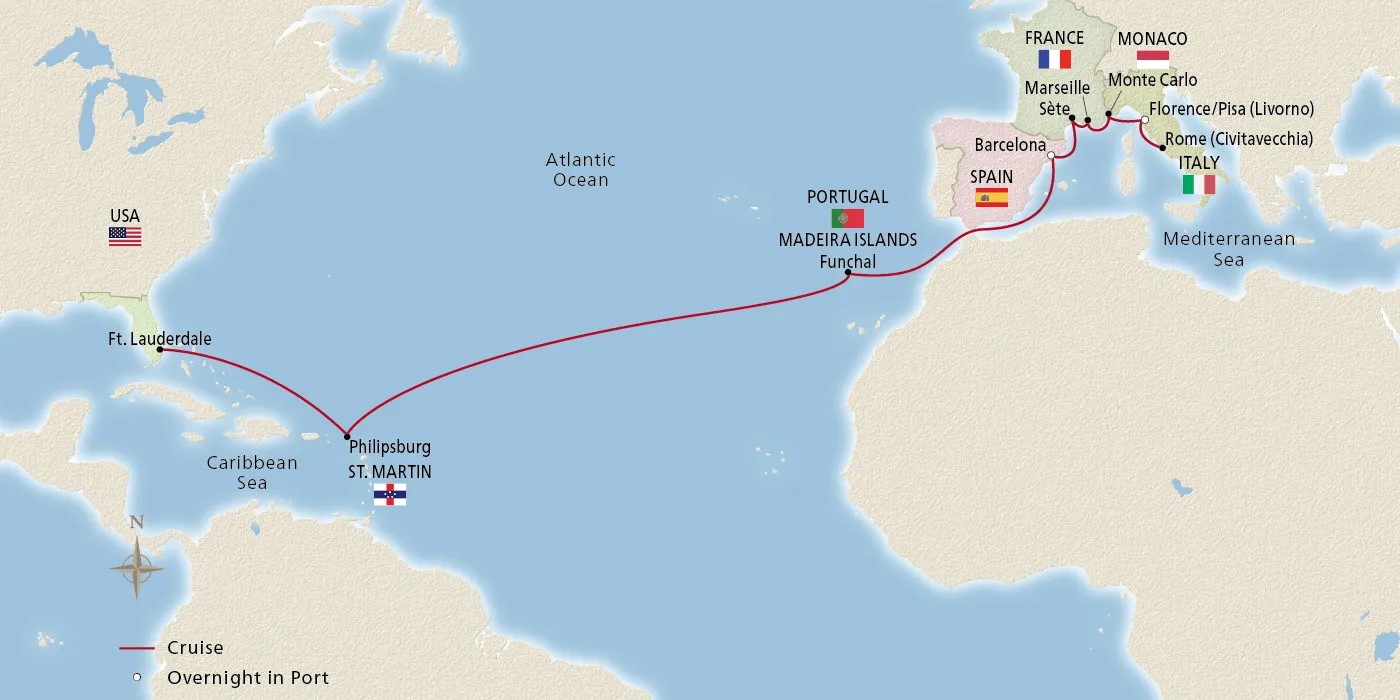
0 Comments